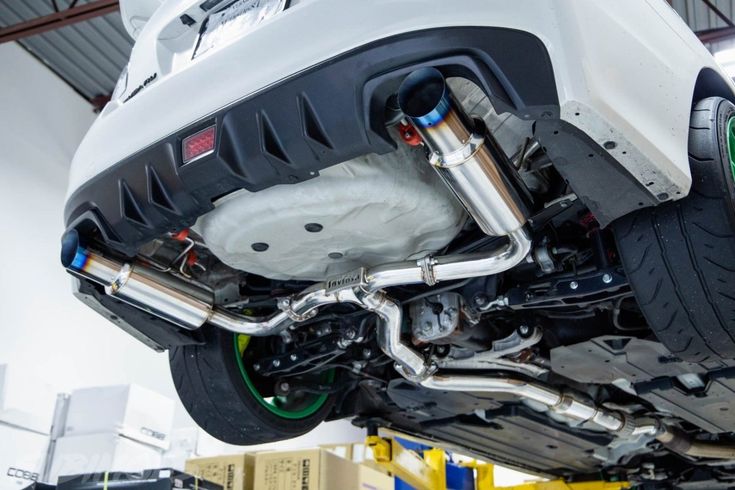
For automotive enthusiasts aiming to elevate their vehicle's performance, sound, and aesthetics, upgrading to an aftermarket exhaust system is a compelling choice. These systems not only enhance engine efficiency but also allow for a personalized driving experience.
🔧 Performance Enhancements
Aftermarket exhaust systems are designed to improve exhaust flow, reducing backpressure and allowing the engine to breathe more freely. This enhancement can lead to noticeable gains in horsepower and torque.
For instance, the Invidia 22+ Subaru WRX 3in. Mid-Pipe w/ Resonator is engineered to optimize exhaust flow, potentially boosting engine performance for Subaru WRX models.
🔊 Auditory Appeal
Beyond performance, these systems offer a more aggressive and sporty exhaust note. The sound profile can be tailored to individual preferences, ranging from a deep rumble to a high-pitched roar, enhancing the overall driving experience.
The Invidia 22+ Subaru WRX Twin Loop 3.5in. Single Layer T.I Tip Axle-Back Exhaust provides a refined yet assertive tone, appealing to those seeking a balance between daily drivability and spirited sound.
🎨 Aesthetic Customization
Aftermarket exhausts provide opportunities to customize the vehicle's appearance. With various finishes and tip designs available, owners can select options that complement their vehicle's style, making it stand out on the road.
The CORSA 2015-2020 Ford Mustang GT Dual Rear Cat-Back Stainless Dual Rear Exit not only enhances performance but also adds a polished look to the rear end of the Mustang GT.
🛠️ Material Matters: Choosing the Right Exhaust Material
The material of an exhaust system significantly influences its performance, durability, and cost. Here's a breakdown of common materials:
Stainless Steel
Pros:
-
Durability: Highly resistant to rust and corrosion, making it suitable for various climates.
-
Longevity: Offers a longer lifespan compared to mild steel.
-
Aesthetic Appeal: Provides a polished look that maintains its appearance over time.
Cons:
-
Cost: Generally more expensive than mild steel options.
The Invidia 22+ Subaru WRX Twin Loop 3.5in. Single Layer S.S Tip Axle-Back Exhaust exemplifies the benefits of stainless steel, offering durability and a sleek finish.
Titanium
Pros:
-
Lightweight: Significantly lighter than stainless steel, contributing to improved vehicle performance.
-
Strength: Offers excellent strength-to-weight ratio.
-
Corrosion Resistance: Highly resistant to corrosion, ensuring longevity.
Cons:
-
Cost: Typically more expensive due to material and manufacturing costs.
-
Availability: Less common, which might limit options.
The Invidia 22+ Subaru WRX Q300 3.5in. Rolled Dual Wall T.I Tip Axle-back Exhaust showcases the advantages of titanium, providing weight savings and a distinctive appearance.
Aluminized Steel
Pros:
-
Affordability: More budget-friendly, making it accessible for many enthusiasts.
-
Ease of Fabrication: Easier to work with for custom applications.
Cons:
-
Corrosion: Prone to rust, especially in humid or salty environments.
-
Longevity: Shorter lifespan compared to stainless steel and titanium.
The MBRP 11-14 Ford 6.7L F-250/350/450 4in Filter Back Single Side Exit Alum and Down Pipe Exhaust is an example of an aluminized steel system, offering a cost-effective solution for diesel truck owners.
🛒 Explore Options at RevRunners
At RevRunners, we offer a curated selection of aftermarket exhaust systems to suit various preferences and budgets. Whether you're seeking performance gains, a distinctive sound, or aesthetic enhancements, our collection has something for every enthusiast.




